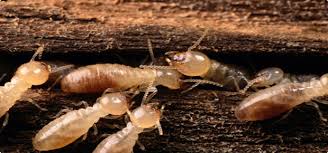Termite mounds and subterranean termite nests are well known for being complicated structures that contain intricate networks of tunnels that connect numerous chambers. Considering that these impressively complex structures exist below the ground and partly within mound protrusions, understanding how these structures are built is a difficult undertaking. For the past several decades, many methods have been introduced that allow researchers to view subterranean termite nests despite these nests being located beneath the ground.
One particular method of making subterranean termite structures visible involves pouring plaster on the ground above a subterranean colony. The plaster slowly fills the subterranean nest as well as the complicated network of tunnels within and around the nest. Once the plaster hardens, the surrounding soil is washed away to reveal the final plaster cast of the subterranean nest and tunnel network. This method was pioneered by Belgian entomologist Jean Ruelle during the 1960s, only Ruelle used concrete as opposed to plaster in order to cast the subterranean termite structures built by the Macrotermes natalensis termite species.
Even before Ruelle pioneered the plaster cast method, another Belgian researcher, Desneaux, had the idea of using medical imaging technology as a method of making subterranean termite nests visible. In 1956 Desneaux secured images of subterranean Apicotermes nests with X-ray radiographs. However, the use of X-ray technology for termite nest imaging remained rare until 2001 when this method was revived by entomologists. Unlike the plaster cast method, which requires the destruction of the subterranean nest, X-ray technology is not invasive and can be used to gather images on active subterranean termite nests. Medical imaging technology can also be used to successfully gather images of drywood and dampwood termite nests that exist within pieces of wood and lumber. For example, in 2004 an entomologist used X-ray tomography and endoscopy to observe the nest building behavior of Cryptotermes secundus within soft wood. Unfortunately, subsequent testing showed that termite behavior was altered by the presence of an endoscope, but non-invasive X-ray technology remains the optimal form of termite nest imaging to this day.
Do you think that repeated use of X-rays on termite colonies can slowly alter termite behavior as a result of radiation poisoning?

